Canyon Ragweed
Ambrosia ambrosioides
LEAVES: Large, coarsely toothed leaves with short, stiff, sometimes
sticky pubescence. The pungent aroma of the crushed leaves smells rather like
the related herb, tarragon. The leaves remain on the plant well into drought
periods but are readily frost deciduous.
SHRUB: The leafy stems are woody at the base and occur in clusters of 5
to 50 or more stems rising from the base to a height of
1 to 2 m.
RANGE: Common to abundant along washes throughout the warm deserts of
Arizona although less common in the driest areas.
FLOWERS: The small, green, rayless flower heads are borne in terminal
spikes. The basal 1 to 3 heads in each spike have only female flowers, which
produce the seeds. The rest of the spike consists of heads containing only male
flowers. Blooms Mar-Apr. Ragweeds and bursages are wind pollinated and for many
people this causes severe allergies.
ACHENE: The female flower heads usually develop one achene that is
tightly encased in a burr formed from the fused phyllaries.
PAPPUS: Absent.
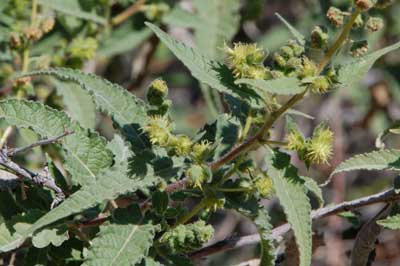
Plants are often found that have numerous pale green warts on the leaf surface. These are caused by nearly microscopic gall mites (Eriophyidae). The mites feed on the plant tissue from the inside of the hollow blisters that are formed by the plant in response to secretions and irritations of the mites. Breaking open the galls will reveal the mites visible with a 20x magnifier.

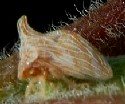
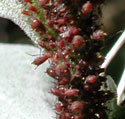
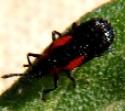
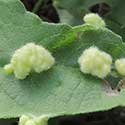

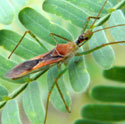
The Brown Ambrosia Aphid (Macrosiphum ambrosias) finds this a suitable host as does a hispine leaf beetle marked with contrasting red and black and having a rather flattened shape. In some places the California Patch Butterfly, Chlosyne lacinia crocale, is associated with this plant. Thus with many herbivorous insects this important desert wash plant provides for insectivorous birds and reptiles. The thumb links above lead to more information about some of the arthropods associated with Canyon Ragweed. The last thumb-link shows one of the many predaceous insects to be found, a leaf-hopper assassin bug.
Asteraceae -- Sunflower Family
More Information:
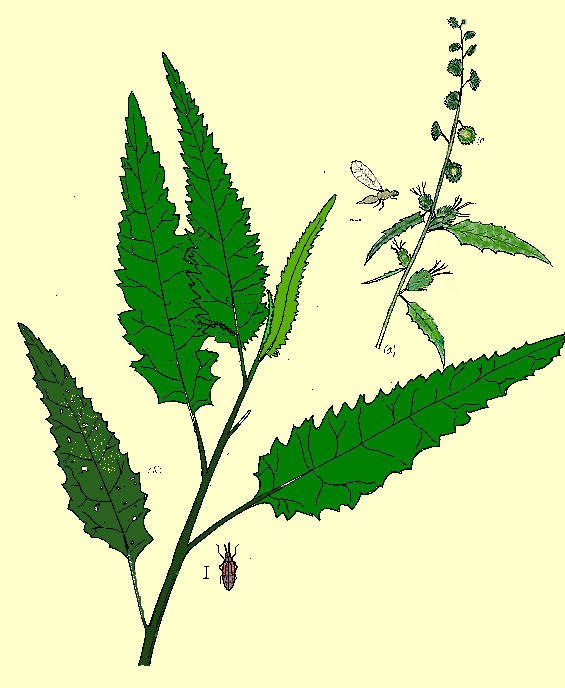
Sponsored Links:
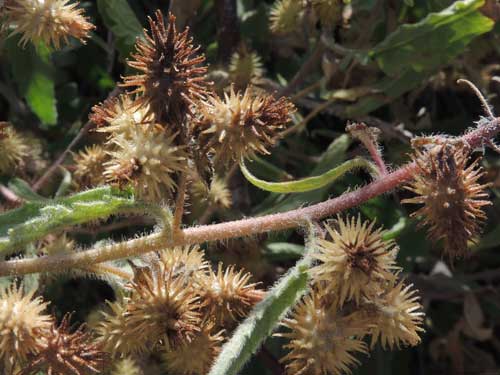
Camp Creek, New River Mts., Maricopa Co., Arizona. 14 May 2017.